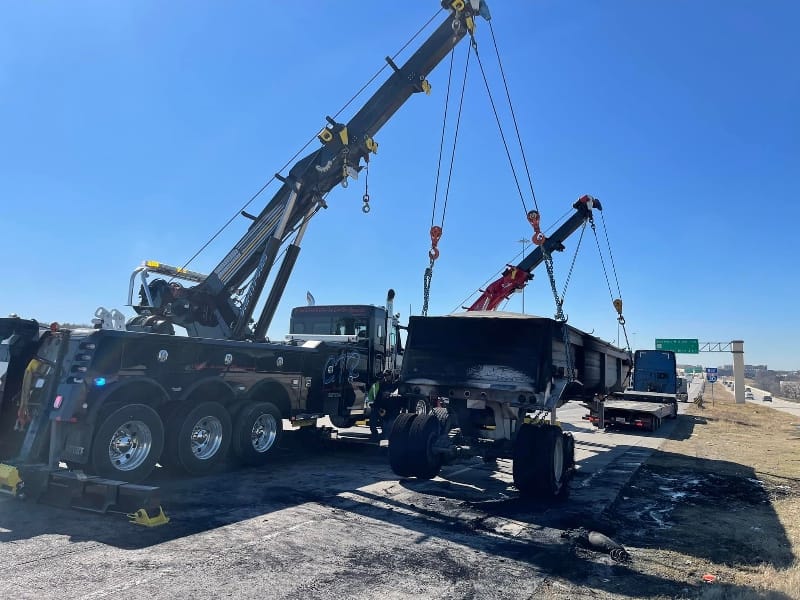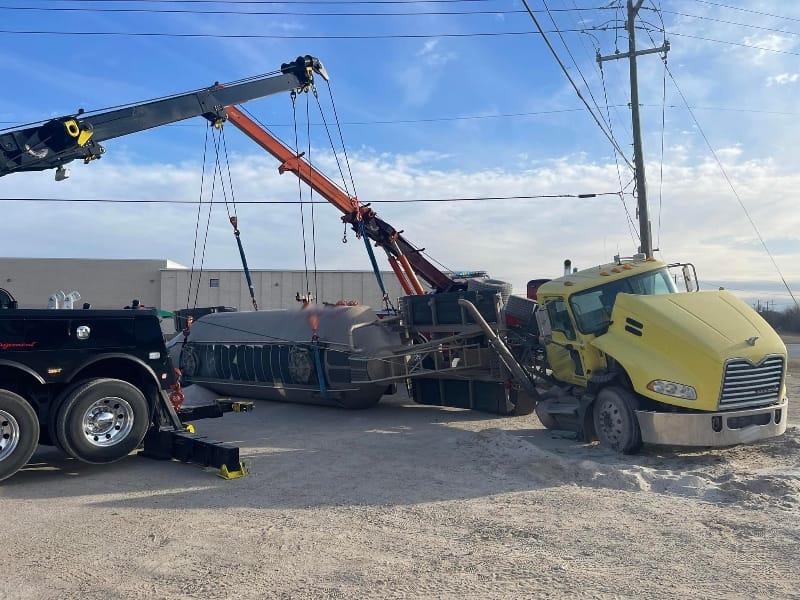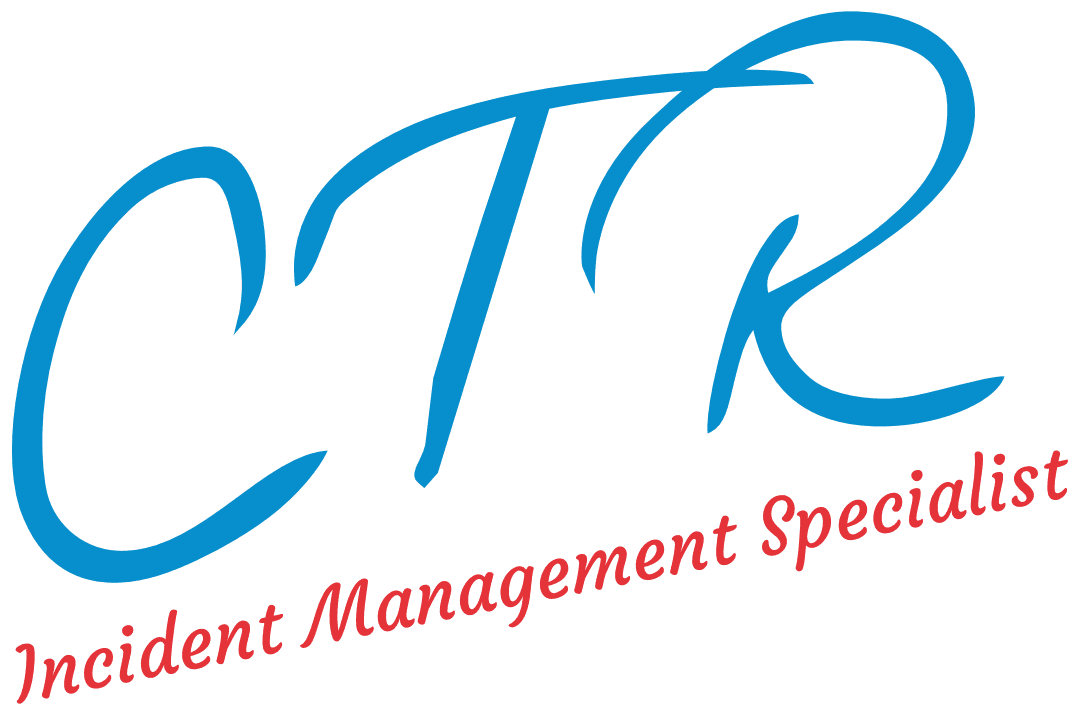Stuck or Stranded? Know the Right Move
We get plenty of calls that start the same way: “My vehicle’s off the road, can you help?!” What the driver doesn’t always know is whether the situation calls for a tow or a winch-out. Most people just know they’re stuck and need someone to get them out. From cars nudged off the shoulder to delivery trucks sunken in soft ground, the type of help needed depends on how the vehicle is positioned and what condition it’s in. The difference between winch-out and tow matters a lot on our end, especially for I-345 heavy towing, where fast and appropriate response keeps traffic moving and prevents further complications.

What Is a Winch-Out?
A winch-out is a recovery service that uses a heavy-duty cable and motorized drum, called a winch, to pull a vehicle back onto solid ground. This service is for vehicles that are stuck but still operable.
For example: your tires are buried in soft dirt after pulling onto the shoulder or you’ve slid into a shallow ditch during heavy rain. The car isn’t damaged, and the engine starts fine. But you just can’t get it moving. This kind of situation calls for a winch-out. We hook up our winch line, engage the system, and guide your vehicle back to a safe, drivable position.
We often perform winch-outs in these situations:
- A vehicle is stuck in snow, sand, or mud.
- A car slides off the road but remains upright and undamaged.
- A driver needs help reversing out of a tight or sloped space.
What’s important to know is that a winch-out doesn’t involve transporting your vehicle. If your car is in working condition but just needs a helping hand to get unstuck, winching is your go-to solution.
What Is a Tow?
Towing, on the other hand, involves lifting and moving a vehicle from one location to another. This is necessary when the vehicle can’t be driven, either due to damage or mechanical failure. In I-345 heavy towing, we often deal with trucks and large vehicles that have either broken down or been in accidents. These jobs require strong rigs capable of moving some serious weight.
Towing is needed in these scenarios:
- A vehicle is totaled or too damaged to drive.
- The engine won’t start or the drivetrain is compromised.
- You’re dealing with a mechanical failure like a snapped axle or dead transmission.
- The law requires removal from the highway after an accident.
Towing typically involves either a flatbed truck or a wheel-lift tow truck, depending on the size and condition of the vehicle. In heavy-duty situations, like on the I-345 corridor, we bring out the big trucks designed to handle semis, box trucks, or construction vehicles.
Choosing Between Winch-Out and Tow
We always ask a few simple questions before we send help. Is the car damaged? Will it start and move once it’s back on pavement? If the answer is yes, it’s probably a winch-out job. If not, then we’re likely looking at a tow.
The key is to avoid trying to “unstick” the vehicle yourself if you’re unsure. Spinning the wheels can dig you in deeper or damage critical parts underneath. Call a professional. On I-345, I-635, I-30 and similar routes, towing is no place for guesswork.
The Role of I-345 Heavy Towing
The Dallas area sees a lot of traffic: from personal vehicles to commercial fleets. We’re on standby for everything from standard tows to major recovery jobs. I-345 heavy towing often involves more than a simple breakdown. These roads run through busy industrial areas and connect to key transport hubs, so when a vehicle goes down, it can affect more than just the driver. Knowing whether you need a winch-out or a tow helps us dispatch the right equipment the first time.
And yes, we’ve had both situations happen back-to-back. A delivery truck gets stuck on a soft shoulder—winch-out. Then it turns out the front axle’s snapped—tow. That’s why our team come equipped for both.
Knowing When to Call and What to Ask
When you call for roadside help, give as much detail as you can:
- Is the vehicle stuck or damaged?
- Can you start the engine?
- Are the wheels spinning without traction?
- Has there been an accident?
The more we know, the better we can prepare.

CTR Towing Service: Your Partner for Reliable I-345 Heavy Towing
We’ve handled recoveries in the middle of the night, in pouring rain, and under blazing sun. Every call is different, but one thing stays the same: clear communication and the right tools make the job go smoother. Heavy winch-outs and I-345 heavy towing aren’t interchangeable. They serve different purposes, and knowing which one fits your situation helps us do our job right.
So the next time you’re stuck near I-345 and unsure what kind of help you need, give us a ring. We’ll ask a few questions, send the right truck, and get you moving again. I-345 heavy towing is what we do, and we’re ready for whatever your day throws at you.

